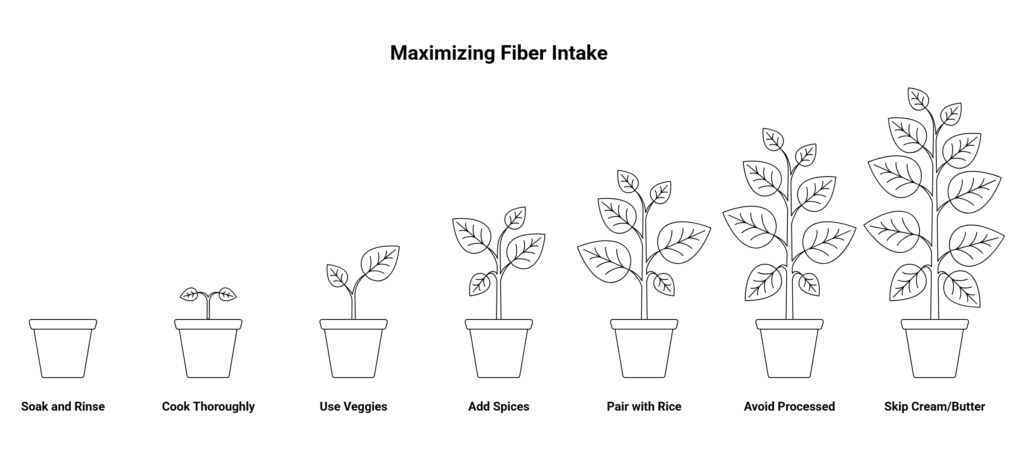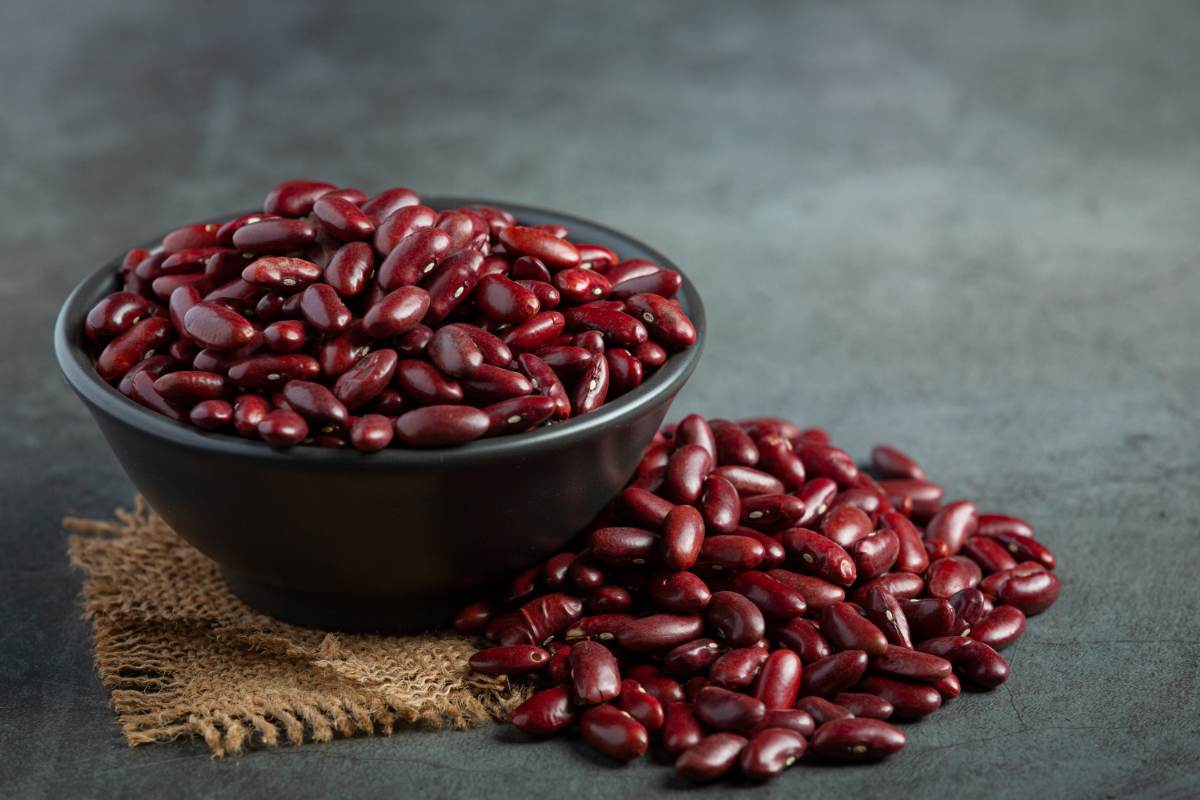Rajma, not just a hearty North Indian classic, but a nutritional powerhouse. Yet, there’s a twist: With the right tricks and pairings, kidney beans (“rajma” in Hindi) can offer even more health benefits, especially when it comes to fiber. Wondering how to level up your favorite rajma dish and support your gut, heart, and more? Let’s break it all down.
What Is Rajma?
Let’s start at the beginning. Rajma, or red kidney beans, are a staple legume in Indian cuisine and worldwide. While native to Mexico and Central America, these beans made their mark, particularly in the northern regions of India, earning superstar status with dishes like “rajma chawal” (kidney beans with rice).
Those little red beans? They’re loaded with plant-based protein, complex carbs, and, yes, tons of fiber.
The Fiber Factor: Why It Matters
Here’s the deal: One of rajma’s biggest nutritional selling points is dietary fiber. This isn’t just about “feeling full” (though, side note, it totally helps you manage weight).
Fiber in kidney beans plays a deep role in…
- Regulating digestion and preventing constipation
- Supporting healthy blood sugar levels (big news for folks dealing with diabetes or prediabetes)
- Lowering LDL (“bad”) cholesterol, protecting your heart
- Helping maintain healthy gut bacteria
Fiber Content, By the Numbers
Let’s get specific:
| Rajma Type / Preparation | Fiber per 100g (approx) |
| Raw/dry | 25g |
| Cooked (boiled) | 6.4–8.5g |
| 1 cup cooked | 13g |
Pretty impressive. But here’s the kicker: You can boost that fiber further just by adjusting how you cook and what you pair with your beans.
How Cooking Methods Affect Fiber Content
Funny thing is, not all rajma is created, or cooked, equal.
Soaking: Your Very First Step
Don’t skip it. Soaking dry kidney beans for 8–12 hours:
- Softens beans for easier (faster) cooking
- Reduces anti-nutrients like phytic acid and lectins (they can block mineral absorption and cause tummy troubles)
- Makes beans easier to digest and less likely to cause that unwanted bloating or gas
Here’s a little pro tip: Always discard the soaking water and rinse beans well before cooking. That gets rid of even more of the pesky stuff.
Boiling/Pressure Cooking: Getting It Just Right
- Pressure cook soaked beans for tender, creamy rajma that’s easy on the gut.
- Overcooked or mushy beans aren’t a problem, they’re often even easier to digest.
- Simmer with the lid slightly askew to help break down fiber without too much nutrient loss.
Add Digestive Spices
If I’m honest, Indian cooks have known it all along: Spices like cumin, ginger, ajwain, turmeric, and hing (asafoetida) don’t just taste great, they help break down beans and cut digestive discomfort. Plus, these “warming” spices may help your body absorb more fiber and nutrients.
Should You Use Canned Rajma?
Sure, it’s fast. But. Canned beans often contain more sodium and preservatives. Cooking beans fresh from dry yields better texture, more flavor, and, oddly enough, a chance for higher fiber intake, depending on soaking and draining habits.
Pairings That Pack a Punch: Simple Veggies to Maximize Rajma’s Fiber
How’s this for a hack? Adding fiber-rich vegetables to your rajma takes your meal from “great” to “superfood” territory.
According to nutrition experts and the USDA, try:
- Carrots: 23.6g fiber/100g (dehydrated); 3.4g (frozen/cooked). Their soluble fiber boosts gut health and slows the absorption of sugars, keeping blood sugar more stable.
- Spinach: Rich in both soluble and insoluble fiber. Bonus: more iron and antioxidants.
- Cauliflower: Surprisingly high in fiber, packs vitamins too.
- Broccoli: Fiber, vitamin C, and a lovely crunch.
- Peas: Plant protein and dietary fiber with a sweet, starchy note.
How to use them? Dice or shred, and toss into the simmering beans. For best results, add at the last stage of cooking, just enough to soften, but not so much that they become mushy.
Pro Tips for Maximizing Fiber in Every Serving

- Always Soak and Rinse: 8–12 hours, ideally overnight. Reduces anti-nutrients, bumps up digestibility, and can improve fiber effectiveness in your system.
- Cook Thoroughly: No shortcuts. Kidney beans need to be tender, all the way through. Undercooked beans can be tough to digest, leading to, well, you know…
- Go Easy on the Oil, Heavy on the Veggies: Minimal oil keeps calories in check; fiber-rich veggies boost volume, nutrition, and, yes, taste.
- Add Spices for Digestion: Cumin, ginger, turmeric, ajwain, and hing help your body handle all that fiber.
- Pair with Brown Rice: Whole-grain rice adds another fiber boost and helps round out the amino acid profile, giving you “complete” protein from a vegetarian meal.
- Don’t Overdo Salt or Processed Ingredients: Canned or packaged beans lose nutrition (and add sodium). Fresh is best for flavor and health.
- Skip Cream and Butter for Vegan/Low-Fat Options: Coconut cream or vegan butter can be tasty if you’re in the mood, but skip them to keep the focus on high-fiber, low-fat nutrition.
Nutritional Breakdown: Rajma at a Glance
| Nutrient (per 100g cooked) | Amount | Why It Matters |
| Calories | 127 | Moderate; fills you up, not out |
| Water | 67% | Hydrating |
| Protein | 8.7g | Muscle repair, energy for vegetarians |
| Carbohydrates | 22.8g | Complex carbs: slow-release energy |
| Fiber | 6.4–8.5g | Key for digestion, satiety, heart & gut |
| Fat | 0.3–0.5g | Virtually none |
| Iron | 2–3mg | Crucial for blood & energy |
| Potassium | 350–1,400mg | Regulates blood pressure |
| Magnesium | 37–63mg | Muscle & nerve health |
| Calcium | 31–54mg | Bone strength |
| Folate (B9) | 160µg | Essential for cell repair and pregnancy |
| Zinc | ~1mg | Immunity, metabolism |
| Vitamins A, C, K, E | Present | Antioxidant-supporting |
That’s a lot of nutrition… for a bean.
Health Benefits, Backed by Science
Digestion & Gut Health
Rajma’s high fiber, both soluble and insoluble, acts like a broom for your gut. It “sweeps out” waste, feeds good bacteria (prebiotic fiber), and cuts the risk of constipation. Some studies even link regular bean intake to a lower risk of colon cancer.
Heart Health
Dietary fiber, magnesium, and potassium together:
- Lower LDL cholesterol
- Improve blood flow
- Support normal blood pressure
Blood Sugar Regulation
With a low glycemic index (ranging 32.47–52.99), rajma won’t spike blood sugar dramatically. That steady energy is especially helpful for anyone managing diabetes or prediabetes.
Weight Management & Satiety
High levels of both protein and fiber mean rajma helps you feel full longer, naturally curbing overeating. Great news if you’re working on shedding pounds or just want stable energy all day.
Bone & Muscle Strength
Contributing calcium, magnesium, phosphorus, and plant protein, these beans help maintain strong bones and support everyday muscle functions.
Antioxidant Power
Red kidney beans are rich in polyphenols, anthocyanins, and other antioxidants. Put simply? They fight free radicals, supporting your long-term health and potentially reducing the risk of some chronic conditions.
“Don’t Beans Cause Gas?” Real Talk on Side Effects
Yep, fiber is amazing, but if your body’s not used to it, you may experience bloating or gas (especially at first). Here’s how to skip the discomfort:
- Soak overnight and rinse thoroughly, flush out those gas-causing compounds
- Cook beans completely, no “al dente” allowed
- Start with smaller portions, gradually building up so your gut adjusts
If you have any underlying digestive conditions, always check with a health professional before changing your diet. Raw or undercooked kidney beans should never be eaten, they contain phytohaemagglutinin, which is toxic in high amounts. Cooking beans properly eliminates this risk.
Instructions
- Soak Beans: Rinse thoroughly, soak 8–12 hours (overnight). Drain and rinse again.
- Cook: In a pressure cooker, cook with water until tender (4–5 whistles or ~15 minutes in an Instant Pot). Test softness, beans should mash easily between your fingers.
- Sauté Base: In another pan, heat a teaspoon of oil. Add cumin seeds, optional hing, then sauté onions until golden. Add ginger, then tomatoes and any remaining spices.
- Mix In Veggies: Stir in your chosen vegetables. Sauté until just soft.
- Combine: Add cooked beans and their water (add more if needed for the desired consistency). Simmer 10–15 minutes, mashing some beans to thicken the curry.
- Season and Serve: Add salt, garnish with coriander, and maybe a squeeze of lemon. Serve with brown rice or whole-grain roti for a complete meal.
More Ways to Sneak In Fiber
- Salads: Slice boiled rajma and toss with cucumbers, tomatoes, onions, and lemon.
- Soups: Stir in carrots, spinach, or kale for even more fiber.
- Wraps: Use spicy rajma and grilled veggies for a grab-and-go meal.
Key Takeaways: Why Rajma Is a Smart, High-Fiber Choice
- Packed with protein, complex carbs, and, most importantly, fiber
- Helps digestion, heart health, blood sugar balance, weight management, and more
- Cooking right + veggie additions = maximum nutrition
Bottom line? With just a few kitchen tweaks, your everyday rajma can become a true nutritional powerhouse, one bowl at a time. If you’re looking for a simple, cost-effective, and delicious way to eat for better health, you could do a lot worse than a steaming hot serving of classic, veggie-loaded rajma.








